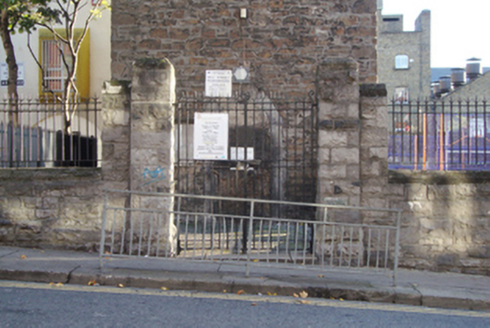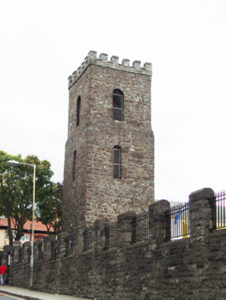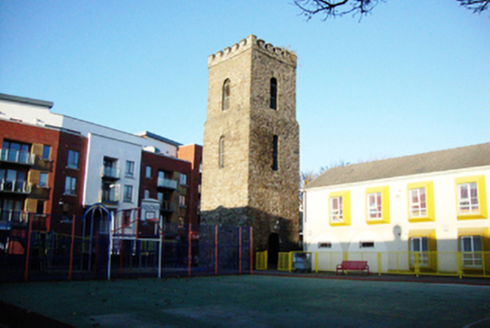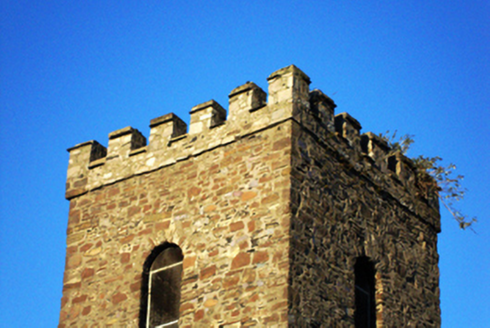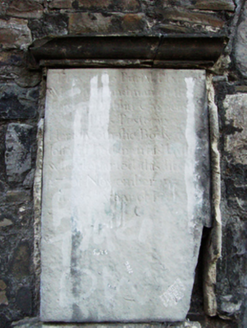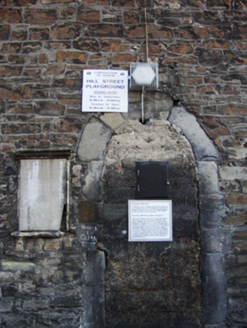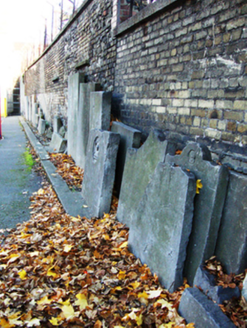Survey Data
Reg No
50010958
Rating
Regional
Categories of Special Interest
Architectural, Social
Original Use
Church/chapel
Date
1710 - 1715
Coordinates
315994, 235182
Date Recorded
30/10/2011
Date Updated
--/--/--
Description
Freestanding square-plan three-stage former bell tower, built 1714, formerly attached to church demolished 1894. Flat roof concealed behind crenellated parapet. Rubble stone walls, with tower stepping out below third stage. Stone commemorative plaque (illegible) to north of doorway on west elevation. Centrally located tall, narrow, round-headed window to third stage of all elevations, with narrower round-headed windows to second stage. Pointed-arch window opening to first floor of east elevation now blocked with rubble stone. Round–headed former door opening, now blocked with concrete blocks, to west elevation on Hill Street, having rubble stone surround and voussoirs. Round-headed door opening with rubble stone surround to east elevation having recent iron door and meshed grill. Former graveyard converted to playground and gravestones cemented in place against brick-lined east-facing wall and concrete boundary wall to south. Family resource centre built close to northeast side of tower. Rubble cut-stone wall to Hill Street with recent iron railings between rubble stone pillars. Recent iron gates west of tower to Hill Street.
Appraisal
Saint George's Church was built in 1714 by Archbishop King and landlord Sir John Eccles, as a Protestant chapel of ease to Saint Mary’s in which parish it lay until the new parish of Saint George was established in 1793. The chapel was about 65 feet long by 30 feet wide, and would have extended east of the tower which still remains. The church is shown on Charles Brooking’s map and in his view of Dublin looking south of 1728. Rocque's map of 1756 also shows the south elevation laid centrally on an entrance from Summer Hill (now Parnell Street). The tower was shown to feature centrally on the west elevation of the chapel. The new Saint George's Church was built further uphill on Temple Street North, designed by Francis Johnson, and was consecrated in 1814. Old Saint George's continued to be used into the nineteenth century, but all except the tower was demolished in 1894, and the bell was moved to the new church. In 1887 Temple Street was renamed Hill Street to regenerate the street which had acquired a bad reputation. The graveyard was converted into an open space by Dublin Corporation at a cost of £700 and was formally opened by the Lord Mayor in 1894. It has since been redesigned as a playground and the gravestones have been cemented into place along the east and south walls of the open space. A family resource centre has been built in the late twentieth century very close to the northeast corner of the tower.
